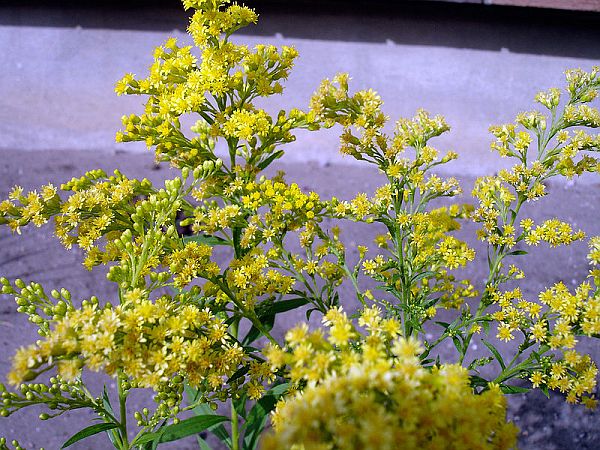September is the month for goldenrod.
Solidago, the genus name for goldenrod, is a member of the Asteracea or Composite family. In North America there are about 100 species of goldenrod, many so similar that it’s hard to tell them apart. Newcomb’s Wildflower Guide lists 29 species in eastern North America but I’ll bet there are more. Goldenrod can hybridize and eventually form new species.
Most goldenrods are “short-day plants” whose blooming is triggered by longer nights and shorter days. They are actually light sensitive to darkness and require lengthening periods of uninterrupted night in order to bloom. If their nights are interrupted by bright lights they don’t bloom at all. Fortunately moonlight and lightning don’t affect this. (I wonder if floodlights do.)
By July the nights are long enough to trigger blooming but most goldenrods wait for August. Early goldenrod is called “early” because it blooms just after the summer solstice.
Like all members of the Composite family, goldenrod produces windborne seeds with fluff to carry them on the wind. Composite seeds are so lightweight that strong winds can carry them thousands of feet above the earth where they’ve been found by scientists during atmospheric sampling. At this height the seeds can travel around the planet and eventually colonize remote oceanic islands.
Imagine this: A strong winter storm passes over Jennings Prairie in the months ahead. It blows the goldenrod seeds to atmospheric heights where they travel around the world and over the Pacific. Eventually the seeds land on Midway Island… and in some future September the offspring of Jennings Prairie bloom as an echo more than 5,000 miles away.
(photo by Daryl Mitchell from Wikimedia Commons)
